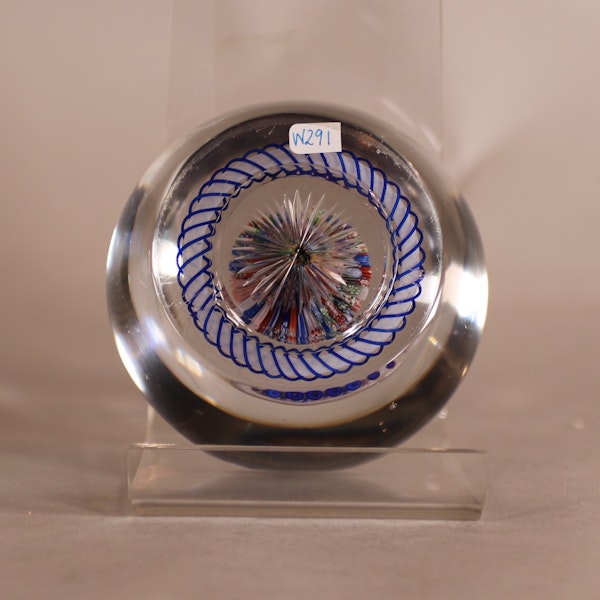French Baccarat close millefiori mushroom paperweight, mid-19th century
French Baccarat close millefiori mushroom paperweight, mid-19th century
POA
Description
French Baccarat close millefiori mushroom paperweight, mid-19th century, the central cluster of canes including stardust and arrowhead forming a colourful cap, encircled by a blue and white torsade, dated 1847.
Notes: For a similar weight see; 'Encyclopaedia of Glass Paperweights' by P. Hollister, p.56
The millefiori (‘thousand flowers’ in Italian) paperweight technique was most likely developed concurrently by glassworkers in Venice, France and Bohemia during the 1830s; the earliest extant examples date to the 1840s. However, France soon emerged as the centre of production, with three manufactories in particular producing a range of weights of exceedingly high quality: Baccarat, Saint Louis, and Clichy. The Baccarat factory had been founded in the 18th century and was known for its high quality crystalware including bottles, stemware and chandeliers; its glass particularly heavy due to its high lead content. Its artisans perfected the millefiori technique in the mid-19th century. Interestingly, Baccarat was the only factory to produce canes with twenty and twenty-two cogs.
| item details | |
|---|---|
| Material and Technique | Glass with canes |
| Origin | French |
| Period | 19th Century |
| Dimensions | Width: 6.5cm. ( 2 9/16in.); height: 4.7cm. (1 7/8in.) |
Product REF: W291






